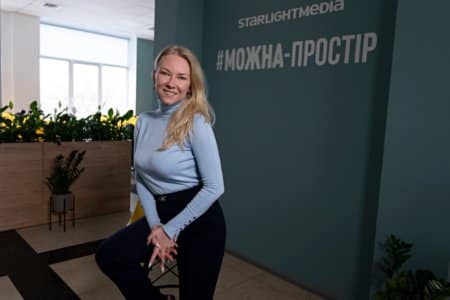
It’s never too late to go to university — or to make the world a better place through sustainable business.
Milah Wouters, 48, is doing that with Circuliar Katoen — translated to “circular cotton” — as part of her Sustainable Entrepreneurship module at Nyenrode Business University. Together with Lise Hordijk, 37, and Esther Verhoef, 50, they are making beanies.
Specifically, beanies spun with the highest percentage of circular fibres from post-consumer waste.
Think of any used clothes you throw away — in hopes they will be recycled. They aren’t. Only 2% of collected textiles — pure wool, pure cotton and acrylic — are recycled into new textiles.
That’s a small dent out of the 92 million tons of textile waste produced annually. This is the monstrosity Wouters and her team are going up against.
As challenging as it may be, projects like these are important for business graduates to stay relevant.
“Every business student should be aware of the sustainability challenges and how they impact the activities of organisations,” says André Nijhof, professor of Sustainable Entrepreneurship and Stewardship at Nyenrode Business University.
His module tackles issues such as climate change, circular economy, inclusivity and poverty. “The main goal of the course is to equip all participants with the tools, skills and mindset to be effective as a change maker in relation to sustainability,’ he says.
Going green is a school-wide effort. When Nijhof joined Nyenrode 15 years ago, being sustainable meant using double-sided printing and separating waste. Then, professors introduced more sustainability-related elective and electric chargers at the parking lot.
“Nowadays, sustainability is at the core of repositioning what our role as a business school is to meet the societal challenges,” says Nijhof. “Our answer is ‘Serving Society by Shaping Responsible Leaders’ and that requires that sustainability is embedded as an integral part of all our activities.”

André Nijhof, professor of Sustainable Entrepreneurship and Stewardship at Nyenrode Business University. Source: Nyenrode Business University
We caught up with Wouters to learn more about her eco-friendly beanies, Circular Cotton and sustainable business ideas:
1. How did the idea for Circular Cotton come about?
Lise, Danielle and I met during the Masterclass Sustainable Entrepreneurship at Nyenrode, which was initiated as a joint effort of Nyenrode and MVO NL. During the Masterclass, Danielle presented a case about textiles.
As Lise and I were working at Bugaboo at that time, we joined her to think about what we could do to make the textile industry change and move towards a more sustainable business model.
A couple of years later Esther and I met each other at an MVO NL event and started talking about circular cotton. During our conversation, Esther indicated the difficulty of having a high percentage of post-consumer recycled content in new textile products.
This was the start of a challenging journey with people like Esther, Lise and Danielle to work on a transition and create change in the textile industry.
2. Why did you choose to focus on beanies and cotton?
We focus on cotton for several reasons. One, there are already several initiatives running on polyester. Two, virgin cotton is a water-intense, chemically-consuming and socially exploitive product.
Three, the focus in the industry is on chemical recycling while in the transition the mechanical recycling process is needed for the tipping point to change.
In general, we are convinced the reuse of materials which are biodegradable should be used. The use of synthetic sources in textiles releases microparticles harmful to land and water.
We initially didn’t want to produce products but sell the yarn.
As brands generally think products made from recycled material are too expensive or don’t meet quality standards, (learning point: most only focus on the end product) we decided to make a one-off product: the beanie.

Sustainable business is nothing new at Nyenrode Business University. Source: Nyenrode Business University
3. Why did you choose to focus on post-consumer waste?
Only 1% of consumer textiles is being recycled. We were shocked by this fact as many companies claim to be circular or use circular material input.
We found out many companies use post-industrial textile waste as input and not post-consumer textile waste when the latter is the biggest waste dump of textiles out there.
4. Can you explain in detail what “post-consumer waste” is?
Post-consumer textile waste is any textile which has been used or worn by a consumer and discarded afterwards.
It’s being discarded after wearing due to runout or because it doesn’t fit anymore, but people mostly get rid of their textiles because it is not being “liked” anymore.
Brands and organisations working with post-consumer waste use mono streams like towels and denim. This is a good start but the challenge lies in the unsorted, mixed textiles worn by consumers.
5. What’s the price of a beanie and how can customers buy them from your company?
The beanie is being sold via Unigear who purchased the beanies from our initiative. They took the risk to purchase them without knowing whether people/the end-consumer will actually buy them.
We don’t do any direct sales to the end consumer, but you can get yours via Unigear. It was a one-off production run, to trial our first finding in recycled cotton – so don’t wait too long to order!
We are working on a new yarn with a higher percentage of recycled content. We don’t know yet what the quality of the yarn will be and thus what product will be made from this. Stay tuned!

Finding out that only 1% of consumer textiles is being recycled, Walters and her team came up with their sustainable business idea. Source: Juni Kriswanto/AFP
6. How do you plan to expand the “sustainable” aspect of your business in the next year?
We plan to expand our impact by firstly, making new yarn with a higher percentage of post-consumer cotton textile waste.
Secondly, to know exactly what the source is. Thirdly, to engage more stakeholders in the production chain and at the brand side to raise the potential of scaling and the awareness of the availability and feasibility of this type of yarn.
7. What were the top three lessons you gained from launching this project?
- Be patient and never, never, never give up.
- Engage partners from all levels and from all parts of the value chain.
- Go back to your purpose time and time again and be flexible in translating the learnings in this purpose.










